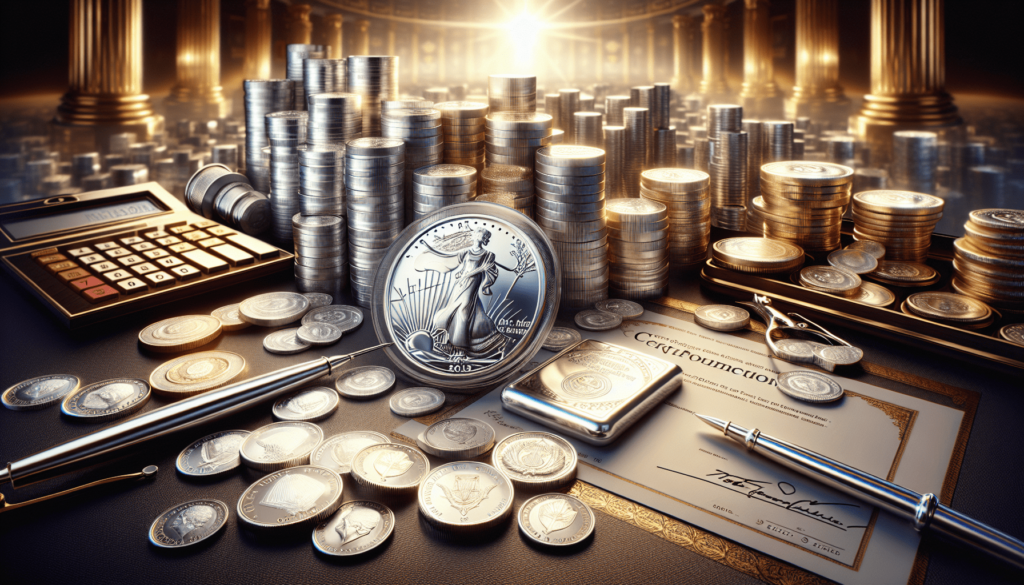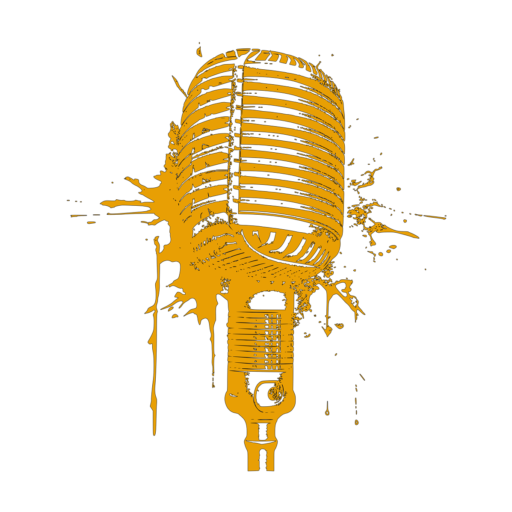Graded silver bullion is a topic that you’ll want to explore if you’re interested in investing in silver. This video by Treasure Town covers all the essential aspects of graded silver bullion as an investment option. The video touches upon the attractive labels and presentation associated with graded silver bullion, the potential for appreciation and selling to collectors, as well as the high premiums involved. It also emphasizes the importance of selling the coins the right way, either through platforms like eBay or directly to collectors. Additionally, the video discusses potential mistakes made by grading companies and highlights the limited collectibility of these coins. If you’re considering graded silver bullion, it’s recommended that you have prior experience with physical silver investing and avoid graded coins valued at $200 or below. The video also suggests utilizing social media channels and websites for further learning about coins and selling collectibles.

Attractive Presentation
Graded silver bullion coins are often attractive due to the labels and certifications they come with. The labels on these coins, such as holographic strips and specific mint markings, can enhance the overall visual appeal. For example, a silver eagle coin with a holographic strip by NGC can make the coin stand out. Additionally, the coins are typically in good shape with minimal wear and clean surfaces. However, it’s important to note that not all graded coins are considered highly attractive, as factors such as toning may affect the overall appearance. Overall, the attractive presentation of graded silver bullion coins can be appealing to collectors.
Labels and Certifications
One of the key factors that contribute to the attractive presentation of graded silver bullion coins is the labels and certifications they come with. Grading companies, such as PCGS and NGC, assign specific grades to these coins based on their condition and quality. These grades are represented on the labels that accompany the coins. The labels often include information about the coin’s grade, minting details, and special designations, such as first year of issue or early releases.
The presence of these labels and certifications adds a level of authenticity and value to the graded silver bullion coins. Collectors are often willing to pay a premium for coins that have been certified by reputable grading companies. The labels also serve as a form of documentation, providing important information about the coin’s condition and history. They can enhance the overall appeal of the coins and make them more desirable to collectors.
Protective Packaging
Another aspect of the attractive presentation of graded silver bullion coins is the protective packaging they come in. These coins are encapsulated in plastic holders, also known as slabs, which provide a layer of protection against damage and deterioration. The slabs are designed to keep the coins securely in place and prevent them from coming into contact with the air, which can cause tarnishing and oxidation.
The use of protective packaging not only ensures the preservation of the coin’s appearance but also adds a sense of professionalism to the overall presentation. The slabs are often tamper-evident, ensuring that the coin remains in its original condition and has not been altered or tampered with. This level of protection can also be attractive to collectors who want to ensure the long-term preservation of their investment.
Potential Appreciation
In addition to their attractive presentation, graded silver bullion coins have the potential for appreciation in value over time. As with any collectible item, rarity and demand play a significant role in determining the future value of these coins. Here are some factors that contribute to their potential appreciation:
Collectible Value
Certain graded silver bullion coins may possess collectible value beyond their intrinsic silver content. This could be due to factors such as limited mintage, unique designs, or historical significance. Collectors who are interested in specific themes or series may be willing to pay a premium to add these coins to their collections. The collectibility factor can drive up demand and potentially increase the value of the coins in the future.
Demand from Collectors
The demand for graded silver bullion coins from collectors can also contribute to their potential appreciation. Collectors are often willing to pay higher prices for coins that are in high demand or have specific attributes that make them desirable. The scarcity of certain coins or specific grades can drive up their value, especially if there is competition among collectors to acquire them. As the collector market evolves and new trends emerge, the demand for certain graded silver bullion coins may increase, leading to potential appreciation in value.

High Premiums
While graded silver bullion coins may have the potential for appreciation, it’s important to consider the associated high premiums. These premiums refer to the additional costs that collectors may need to pay above the spot price of silver to acquire graded coins. Here are some factors that contribute to these high premiums:
Additional Costs
The process of grading and certifying silver bullion coins involves additional costs that are passed on to the collectors. Grading companies charge fees for their services, which can vary depending on the coin’s value, rarity, and the desired level of certification. These costs are factored into the price of the graded coin, resulting in higher premiums compared to non-graded bullion.
Additionally, the attractive packaging and labels that come with graded coins also contribute to the higher premiums. Collectors often pay more for coins that are presented in quality slabs with visually appealing labels and certifications.
Impact on Investment Return
The high premiums associated with graded silver bullion coins can have an impact on the potential investment return. In order to see significant returns on investment, the price of the coin needs to appreciate substantially to cover the initial cost and the premium paid. If the market for graded coins remains relatively stagnant or experiences minimal growth, it may take longer for investors to see a substantial return on their investment.
It’s important for collectors to carefully consider these additional costs and potential impact on investment returns before deciding to invest in graded silver bullion coins.
Recommended Selling Methods
When it comes to selling graded silver bullion coins, there are recommended methods that can help collectors maximize their returns and reach the right buyers. Here are a few suggested selling methods:
eBay
eBay is a popular online marketplace where collectors can sell their graded silver bullion coins directly to other collectors. This platform allows sellers to reach a wide audience and potentially find buyers who are interested in specific coins or grades. It’s important to create detailed listings with high-quality images and accurate descriptions to attract potential buyers. Collectors should also consider pricing their coins competitively to increase the chances of a successful sale.
Collectors
Selling directly to collectors who are interested in graded silver bullion coins can be another effective method. This can be done through social media platforms dedicated to coin collecting or by participating in coin shows and conventions. By targeting the right audience, collectors may be able to negotiate a fair price for their coins and avoid paying additional fees or commissions associated with other selling methods.
Avoiding Coin Shops
Selling graded silver bullion coins to coin shops may not be the most recommended method. Coin shops typically buy coins at a lower price than what collectors may expect due to the need for them to make a profit when reselling the coins. Additionally, coin shops may not be as interested in specific grades or certifications, which can limit the potential returns for collectors. It’s generally advised to explore other selling methods before considering coin shops as the final option.
Potential Mistakes with Grading Companies
While grading companies play an important role in certifying the condition and authenticity of graded silver bullion coins, there are potential mistakes that collectors should be aware of. These mistakes can affect the accuracy of the assigned grade and impact the overall value of the coins. Here are some common mistakes associated with grading companies:
Errors in Grading
Grading coins is a subjective process, and human errors can occur. While grading companies strive for accuracy and consistency, there may be instances where mistakes are made. This can result in a coin being assigned a higher or lower grade than it deserves. Collectors should be cautious when relying solely on the assigned grade without conducting their own evaluation of the coin’s condition.
Minimal Difference in Grades
In some cases, the difference between two consecutive grades, such as Mint State 69 (MS69) and Mint State 70 (MS70), may be minimal. This means that a coin graded MS69 may be in nearly the same condition as a coin graded MS70 but with minor imperfections. The premium associated with a higher grade may not always justify the price difference, considering the minimal difference in the actual appearance and quality of the coins.
Collectors should take these potential mistakes into account and consider obtaining a second opinion or conducting thorough research before making purchasing decisions based solely on the assigned grades.
Limited Collectibility
While certain graded silver bullion coins may possess collectible value, it’s important to recognize that the overall collectibility of these coins is limited. Graded bullion coins are not considered highly sought after by collectors in comparison to other numismatic items. Here are some reasons why their collectibility is limited:
Not Highly Sought After
Graded silver bullion coins do not command the same level of interest and demand as rare or unique numismatic coins. Collectors often focus on coins with specific historical significance, rare mintage, or unique designs. Graded bullion coins, on the other hand, are primarily valued for their silver content and overall condition, rather than their numismatic attributes.
Limited Market
The market for graded silver bullion coins is relatively niche compared to the broader numismatic market. While there are collectors who specifically seek out and collect graded bullion coins, the overall demand for these coins is not as widespread. This limited market can impact the potential appreciation in value and the ease of selling these coins in the future.
Collectors should consider these limitations in collectibility when deciding whether to invest in graded silver bullion coins.
Challenges of Selling Graded Coins
Selling graded silver bullion coins can present certain challenges that collectors should be aware of. These challenges can arise during the selling process, especially when dealing with coin shops or finding the right buyers. Here are some potential challenges:
Difficulty in Coin Shops
As mentioned earlier, selling graded coins to coin shops may not be the most favorable option. Coin shops often offer lower prices compared to the market value of the graded coins, as they need to factor in their profit margin when reselling the coins. It may also be challenging to find coin shops that are specifically interested in graded silver bullion coins, as their focus may be more on numismatic items or bulk silver bullion.
Finding the Right Buyers
To successfully sell graded silver bullion coins, collectors need to find the right buyers who are interested in these specific coins and grades. This can require extensive networking and research to identify potential buyers, whether through online platforms, collector communities, or coin shows. Finding buyers who appreciate the value of graded coins and are willing to pay a fair price can be a time-consuming process.
Collectors should be prepared for these challenges and explore different selling methods to ensure a successful and profitable sale of their graded silver bullion coins.
Not Recommended for Beginners
Graded silver bullion coins may not be the best investment option for beginners or those who are new to coin collecting. Here are a couple of reasons why these coins may not be suitable for beginners:
Coins Valued at $200 or Below
For beginners, it’s generally recommended to start with more affordable coins valued at $200 or below. Graded silver bullion coins often come with high premiums, making them more expensive compared to non-graded bullion or other entry-level coins. Beginners may find it challenging to justify the additional cost for graded coins, especially if they are primarily focused on the silver content rather than the numismatic aspects.
Prioritizing Physical Silver Investment
Beginners in the coin collecting and investment world may benefit more from prioritizing physical silver investment rather than graded silver bullion coins. Investing in physical silver, such as bullion bars or non-graded silver bullion coins, allows beginners to build their silver holdings at a lower cost and without the additional premiums associated with graded coins. This approach ensures a solid foundation in silver investing before considering more specialized options like graded coins.
Potential for Small Losses
When selling graded silver bullion coins, collectors should be aware that there is a potential for small losses due to market fluctuations and transaction costs. Here are some factors to consider:
Market Fluctuations
The value of graded silver bullion coins can be influenced by market fluctuations in the price of silver and changes in collector demand. If the price of silver experiences a significant drop, it can impact the overall value of graded coins, potentially resulting in a loss when selling. Market conditions can be unpredictable, and collectors should be prepared for the possibility of small losses in certain scenarios.
Transaction Costs
When selling graded coins, collectors may also encounter transaction costs that can affect their potential returns. These costs can include fees for listing the coins on online platforms, shipping fees, and fees charged by grading companies, if the coins need to be re-certified during the selling process. These additional expenses can eat into the overall profit margin and result in a smaller return on investment.
Collectors should carefully consider these potential costs and market conditions before selling their graded silver bullion coins to avoid significant losses.
Conclusion
Graded silver bullion coins can be an attractive investment option for collectors due to their presentation, potential appreciation, and collectible value. However, it’s important to consider the high premiums associated with these coins and the potential impact on investment returns. When selling graded coins, collectors are recommended to explore methods such as eBay or selling directly to collectors to maximize their returns. Mistakes by grading companies and limited collectibility should also be taken into account.
It’s crucial to assess personal investment goals and experience level before considering graded silver bullion coins. Beginners may find it more suitable to focus on physical silver investment rather than graded coins. Additionally, collectors should be aware of potential market fluctuations and transaction costs that can impact their returns. By carefully considering the pros and cons, collectors can make informed decisions regarding the purchase and sale of graded silver bullion coins.

